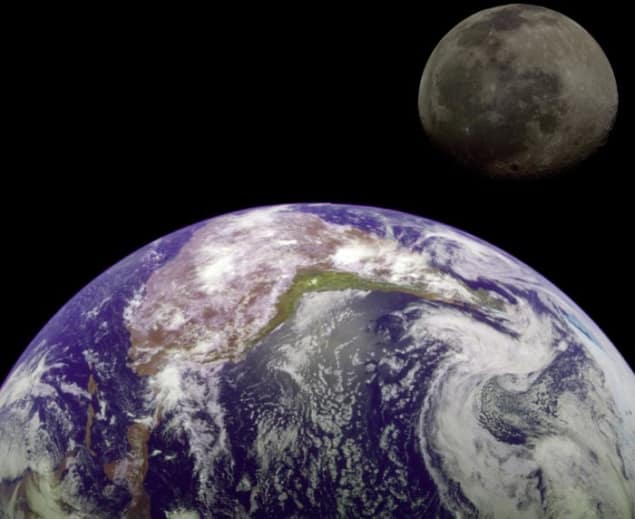
An international team of researchers claims that nearly all of the material that makes up the Moon came from the early Earth. These findings contradict astronomical models of the formation of the Moon by the impact of a Mars-sized object with the early Earth that suggests more than 40% of the Moon-forming material came from the Mars-sized impactor known as “Theia”.
The study, published in Nature Geoscience, is based on the popular Moon-formation scenario that suggests that Theia collided with a young proto-Earth and that this giant impact threw up a disc of material that then orbited the Earth. The disc is thought to have condensed within a few centuries and then rapidly accreted to form the Moon as we now know it. Many numerical simulations of this scenario have suggested that a maximum of 60% of the disc-forming material would have come from the Earth’s mantle, with the other 40% being Theia material. This means that the distinct geochemical compositions of the Earth and Theia should be found in lunar material, as Theia matter should be easily distinguishable from Earth matter.
Tricky titanium
But Junjun Zhang from the University of Chicago in the US and other colleagues in Switzerland found that when they compared the relative abundance of titanium isotopes in samples of rocks from the Earth and the Moon – after correcting the lunar signature for any “noise” that might be caused by cosmic rays – they found both signatures identical to about four parts per million. According to the researchers, this isotopic homogeneity of titanium suggests that the Moon is composed almost entirely of material from the mantle of Earth. This result seems to contradict most numerical giant-impact models or suggests that Theia’s composition was surprisingly similar to that of the Earth’s.
In the past, other researchers have looked at the isotopic signatures of lunar material and have found that silicon, chromium, tungsten and oxygen isotopes for Earth and lunar material are very similar. Silicon, chromium and tungsten work in accordance with the giant-impact numerical calculations, working on the assumption that Theia’s composition is quite similar to that of Mars. But, as it is with the titanium isotopes, the oxygen isotopic signatures of both terrestrial and lunar rocks are so similar that Theia cannot have contributed more than a few per cent of material to the Moon-forming disc.
Earth’s twin?
The researchers do consider the possibility of Theia having a surprisingly similar composition to that of the Earth; but they also point out in the paper that “this idea seems to be contrived and requires special circumstances for an embryo [Theia] to have the same titanium, oxygen and tungsten isotopic compositions as a growing planet [Earth]”. An alternative scenario that the researchers suggest is that isotopic differences between Earth and Theia matter could have been erased during the volatile exchange of matter in the aftermath of the impact. But for this to happen with titanium, unrealistic scenarios – such as extremely slow cooling of the Moon-forming disc or large-scale turbulent mixing would be needed to be invoked. Other possibilities, including the fact that the lunar material may have been created by an exchange of material between the Earth’s magma ocean and the proto-lunar disc, or by being thrown off from a rapidly rotating post-impact Earth are now being considered.
The work is published in Nature Geoscience.



